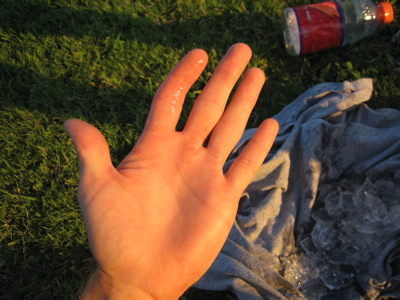Joint Dislocation Causes, Symptoms, Diagnosis and Treatment

What is Joint Dislocation?
A dislocation, or luxation, occurs when there is an abnormal separation in the joint, where two or more bones meet. A partial dislocation is referred to as a subluxation.
A joint dislocation can cause damage to the surrounding ligaments, tendons, muscles, and nerves.
Dislocations can occur in any joint major (shoulder, knees, etc.) or minor (toes, fingers, etc.). The most common joint dislocation is a shoulder dislocation.
When treated properly, most dislocations return to normal function after several weeks of rest and rehabilitation.
However, some joints may have an increased risk of repeat dislocation.
Causes of Joint Dislocation:
Joint dislocations are caused by trauma to the joint or when an individual falls on a specific joint.
Great and sudden force applied, by either a blow or fall, to the joint can cause the bones in the joint to be displaced or dislocated from normal position.
With each dislocation, the ligaments keeping the bones fixed in the correct position can be damaged or loosened, making it easier for the joint to be dislocated in the future. This increases the likelihood of future dislocations.
Some individuals are prone to dislocations due to congenital conditions, such as hypermobility syndrome.
The following factors increase the risk of incurring joint dislocation:
- Susceptibility to falls.
- The more falls one experiences, the higher the probability of dislocating a joint.
- Heredity.
- Some people are born with ligaments that are looser and more prone to injury than those of most people.
- Sports participation.
- Many dislocations occur during participation in high-impact or contact sports, such as:
Gymnastics
Wrestling
Basketball
Football.
- Motor vehicle accidents.
- These are the most common cause of hip dislocations.
Symptoms of Joint Dislocation:
The following symptoms are exhibited:
- Intense Pain
- Joint instability
- Deformity of the joint area
- Reduced muscle strength
- Bruising or redness of joint area
- Difficulty moving joint
- Stiffness
Diagnosis of Joint Dislocation:
Joint dislocation can be diagnosed via the following tests and exams:
- Physical exam
- X-ray, in order to confirm the dislocation and may reveal broken bones or other damage to the joint.
- MRI to assess damage to the soft tissue structures around a dislocated joint.
Treatment of Joint Dislocation:
Treatment of joint dislocation depends upon the severity and type of dislocation.
The following treatment options are available:
- Reduction
- During this process, the doctor may try some gentle maneuvers to help the bones back into position.
- Immobilization.
- After the bones are back in their right positions, the doctor may immobilize the joint with a splint or sling for several weeks.
- Surgery
- Surgery is required in case of inability of moving the affected bones to its place or in case of recurring dislocations.
- Rehabilitation
By : Natural Health News




